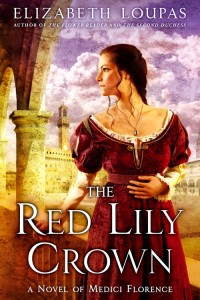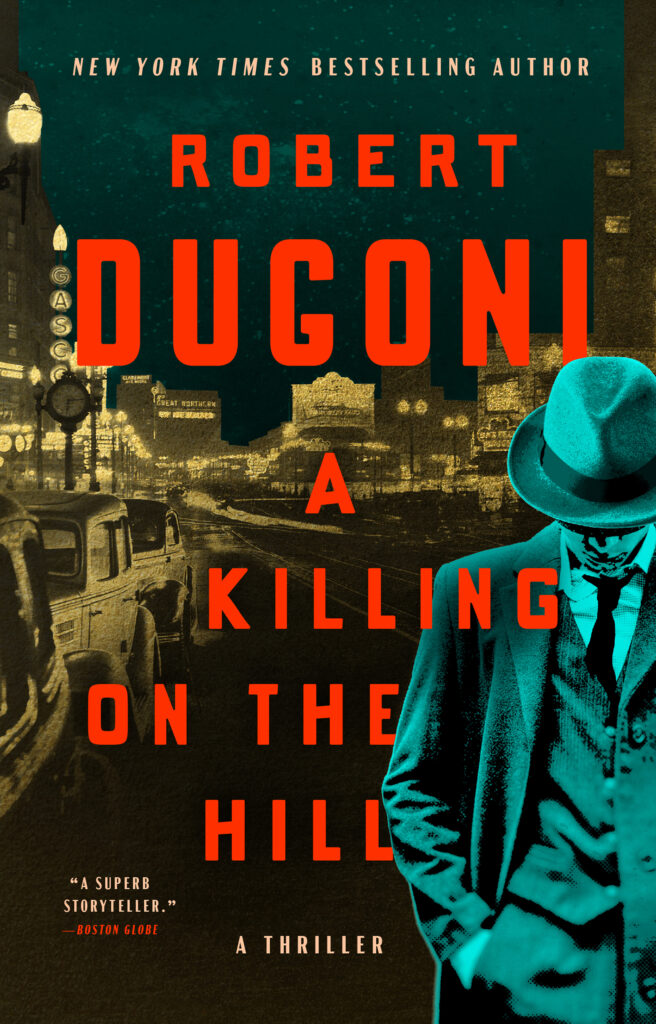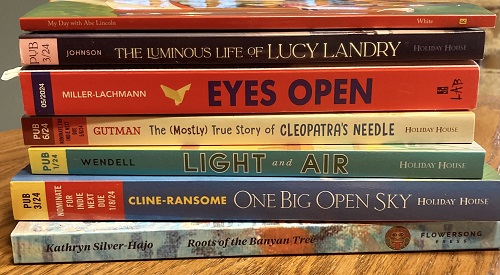Historical Heroines, Research, and the Infamous Medici Family
JENNIFER QUINLAN
Elizabeth Loupas arrived on the historical fiction scene in grand style with her debut novel, The Second Duchess, an exciting historical mystery with a supernatural twist. In her third novel, The Red Lily Crown, on sale April 1 from NAL Trade, Elizabeth returns to medieval Italy with the tale of an innocent young woman forced into service in Francesco de Medici’s court, where alchemy, dark magic, murder, and betrayal abound. I recently had the chance to ask Elizabeth a few questions about her writing, her inspiration, and her research.
JQ: What inspired you to write historical fiction?
EL: I was inspired to write historical fiction because I’ve always loved to read historical fiction. When I was in grade school, I puzzled my way through my parents’ grown-up books by Frank Yerby and Thomas Costain, and even if I had to sound out some of the words, I was entranced by the swashbuckling and the sheer romance of it all. As I grew up and began to choose my own books, I fell headlong into the Angelique series by Sergeanne Golon, and later, the most formative of all, the inimitable Lymond books by Dorothy Dunnett. Historical fiction was always my favorite thing to read, and so of course it would be my favorite thing to make up for myself.
JQ: Your novels feature strong, capable heroines who find it difficult to sit idly by without taking matters into their own hands. How do you find a balance in creating characters who appeal to modern sensibilities while remaining true to the historical era?
EL: For me, one of the most fascinating aspects of historical fiction is the fact the people were people even when they lived in different times and places. So a girl like Chiara Nerini, who lives in a society where women were pretty much the chattels of their fathers, brothers, and husbands — what does she do? What does she think? How does she manage to live her life? What consequences would she suffer? One of the endlessly fascinating things about writing historical fiction is imagining how women in their times managed to use their strength and intelligence within and despite the very real constraints they faced.
JQ: Your novels have taken readers from medieval Italy to Scotland and back to Italy. What kind of research do you do to prepare for your novels?
EL: I read, read, read. I read as much as I can in original letters, books and manuscripts — for The Red Lily Crown, the Medici Archive Project and its “Bia” database were invaluable. I read secondary sources — books and articles by historians. I pore over museum catalogs (and actual displays when I have the chance) to see what things really looked like — furniture, items of clothing, tools, weapons, household goods. I collect images, particularly paintings and portraits of the time. I correspond with experts.
I keep doing research as I write. It’s amazing how one can barely write a paragraph in a historical novel without having to stop and look something up.
JQ: Did you come across any surprises or interesting tidbits while researching The Red Lily Crown?
EL: There are always surprises. One of the most interesting (or perhaps the most eerie, depending on how you look at it) concerns Duke Francesco’s poison maze in the Boboli Gardens. This was completely fictional — I made it up “out of the whole cloth,” as my mother used to say, with a nod to Nathaniel Hawthorne and “Rappaccini’s Daughter.” Then one day as I was struggling through an old book by a fellow named Gaetano Cambiagi about the history of the Boboli Gardens, I found an obscure note to the effect that “. . . the area to the left of the avenue, once a maze, today has the fascinating serpentine road.” Once a maze? So there really was a maze, and very close to where I’d imagined it. (Cue Twilight Zone theme.)
Some of the most interesting information — which I didn’t know about when I started thinking about the book — is in the Medici Anthropological and Paleopathological Project, which exhumed and studied the skeletons of the Medici family entombed in the Basilica of San Lorenzo in Florence. The actual bones of the Medici, of Francesco and Ferdinando, of Giovanna of Austria, of poor little Prince Filippo, photographs of them, all with the researchers’ findings and comments about their health, their lifestyles, their deformities, their deaths! And as a side note, Francesco’s second wife, Bianca Cappello, is not buried with the Medici who hated her—her burial place to this day is unknown.
JQ: Did you find any scenes in The Red Lily Crown particularly exciting or challenging to write?
EL: I don’t think I could pick any particular scenes — I loved (and/or was terrified by) them all. The alchemical experiments were fascinating, and I did my best to make them accurate for the time and place. Chiara’s initiation and her two experiences in the poison maze were intense. I always loved any scenes where the little hounds played a part (you knew there would be hounds, right?), and any scene with Nonna in it. Some of the others — well, to describe them would be to spoil the story!
JQ: When writing about a family as infamous as the Medicis, who also featured in your first book, The Second Duchess, how do you separate the fact from the fiction to arrive at your own conclusions and characterizations of these historical figures?
EL: The Medici are just well-documented enough to provide a strong skeleton for a story, while at the same time there are enough mysteries and contradictions to flesh out a tale. Antonio de Medici is a good example — the presumed bastard of Duke Francesco and his then-mistress Bianca Cappello. We know he existed. His later life is better documented than his earlier life. But when, exactly, was he born? There’s no real documentation. Where and how? The same. Was he really Francesco’s child? Really Bianca’s child? There were so many conflicting stories told (by people of the time with various axes to grind) that one has to just pick one that makes the most sense and run with it.
That’s what I tried to do throughout — imagine these historical personages as real, flesh-and-blood people who didn’t already know what the future held, and from there work out what they might logically have done and why.
JQ: If you could travel back in time and spend one day with the historical figure of your choice, who would you visit and what would you do while you were there?
EL: Oh my goodness. Only one? I could never choose.
I think I’d like to have an intimate women’s supper with the Austrian sisters, Barbara (from The Second Duchess) and Giovanna, plus Isabella de Medici, Eleanora di Garzia de Medici (Dianora), and Bianca Cappello. Assuming we could keep them from tearing each other’s hair out, I’d like to hear them all tell their true stories, and defend themselves against the various calumnies that history has developed against them. Then at the end, perhaps the men could come in for a moment . . . Alfonso d’Este, Francesco de Medici, and Cardinal Ferdinando. (I’ll pass on meeting Paolo Giordano Orsini and Pietro de Medici.) That would be a night to remember!
JQ: What are you working on now?
EL: I’m working on a couple of different projects. One of them touches on the English court-in-exile of Henrietta Maria in Paris, with a heroine who is a descendant of Rinette Leslie and Nico de Clerac from The Flower Reader, who were, of course, staunch Stuart supporters. Henrietta Maria herself was the granddaughter, through Maria de Medici, of Francesco and Giovanna, so that ties in the Medici as well. Other threads in this story are the history of chocolate in Europe, a fictional assassination attempt against the Spanish Infanta Maria Theresa as she travels to Paris to marry the French king, and a very strange English religious/political group called the Fifth Monarchists. I’m not even going to mention the working title because titles get changed so often!
About the contributor: Jennifer Quinlan (aka Jenny Q) is a freelance fiction editor and cover designer. She maintains a popular review blog, Let Them Read Books, and is a contributor to Romantic Historical Reviews and the Historical Novel Society. She is also the founder and moderator of the American Historical Fiction Group on Goodreads.







